The opioid epidemic isn’t the only public-health crisis costing the economy hundreds of billions of dollars. According to the Trust for America’s Health’s annual “State of Obesity” report, nearly 40% of American adults are obese or overweight. And collectively, they will add some $150 billion to the cost of health care, and billions more in lost productivity.
Obesity rates have finally stabilized after having nearly tripled since the CDC first began tracking them in 1960. They’ve doubled since the 1980s. Particularly problematic is childhood obesity, which is correlated with poor performance and school and other factors that could impact a child’s wellbeing into adulthood.
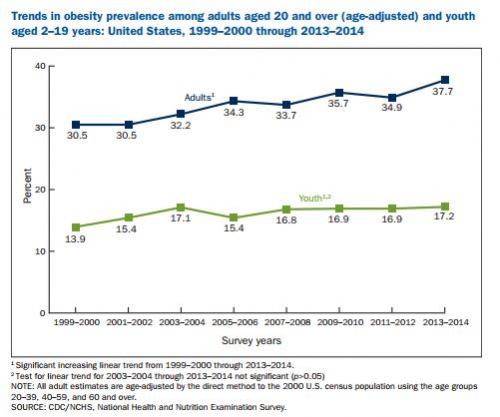
According to the study, obesity disproportionately affects low-income Americans:
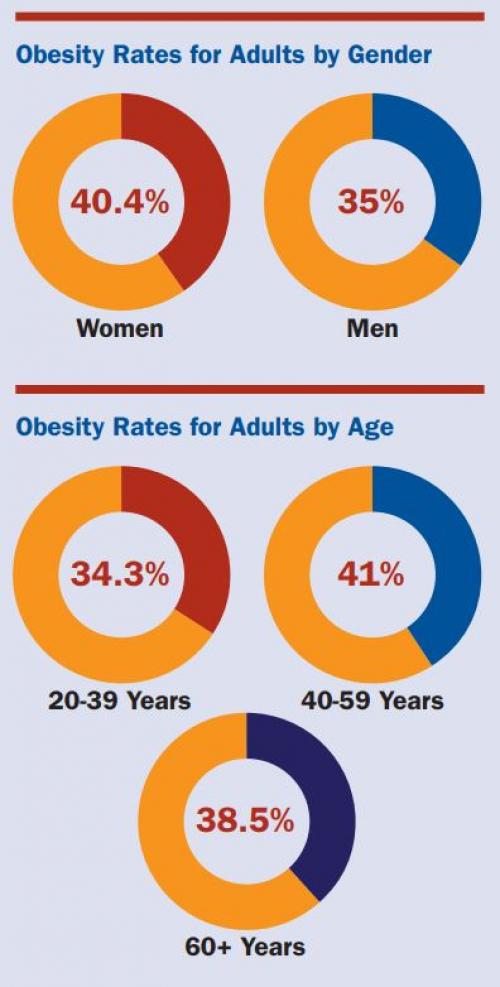
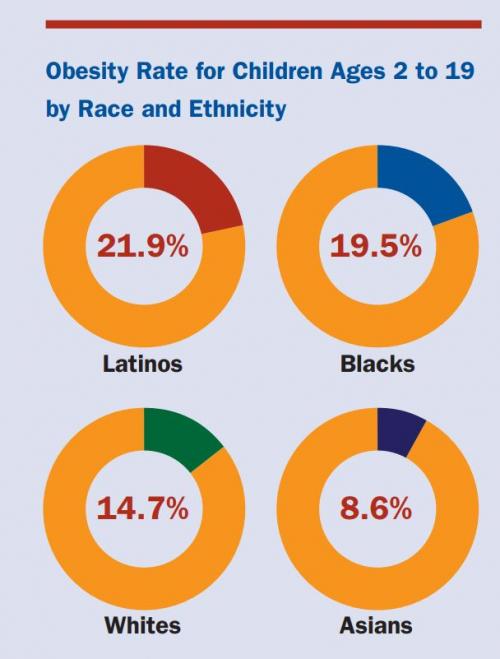
“Obesity disproportionately affects low-income and rural communities as well as certain racial and ethnic groups, including Blacks, Latinos and Native Americans. Societal inequities contribute to these disparities. For example, in many communities, children have few safe outdoor spaces to play or accessible routes to walk or bike to school. Their neighborhoods may often be food deserts, having small food outlets and fast-food restaurants that sell and advertise unhealthy food and beverages, but lacking those with fresh and healthy foods at affordable prices. Thus, addressing the obesity epidemic is also a fight for health equity.”
The report, which is accompanied by charts and maps, illustrates how obesity rates vary across different regions, with West Virginia (and a preponderance of poor, South states) having the highest obesity rate among adults, at 37.7% Colorado, meanwhile, has the nation’s lowest with 22.3%. Mississippi wins the superlative for highest childhood-obesity rate at 21.7%, with Oregon owning the lowest, at 9.9%.
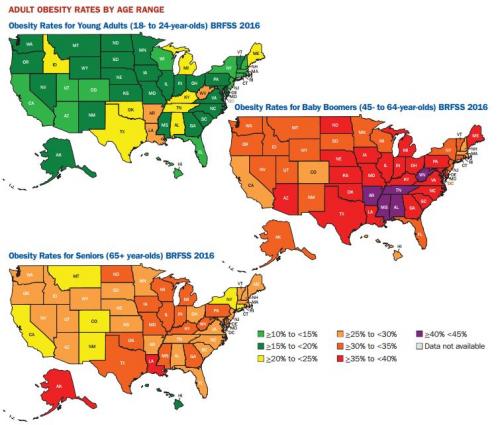
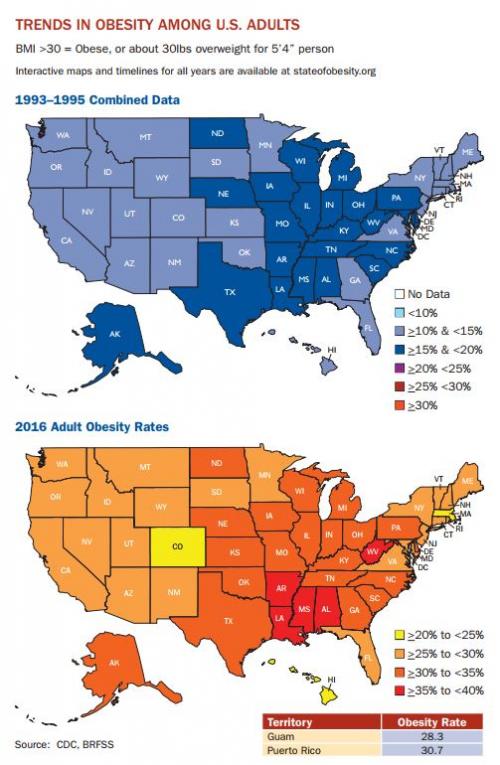
“Obesity rates vary state-to-state, but remain high nationwide. Across the United States, more than one in three adults and one in six children (ages 2-19) are obese — and one in 11 young children (ages 2-5) are obese. Adult obesity rates range from a high of 37.7 in West Virginia to a low of 22.3 in Colorado. Childhood rates are highest in Mississippi (21.7 percent) and lowest in Oregon (9.9 percent). Obesity rates also differ from county to county, and neighborhood to neighborhood.
More than 20 states have counties with adult obesity rates above 40 percent, including 29 counties in Mississippi and 14 counties in Alabama. Only two states have counties with adult obesity rates below 20 percent: 17 counties in Colorado and one in Massachusetts.”











Leave A Comment